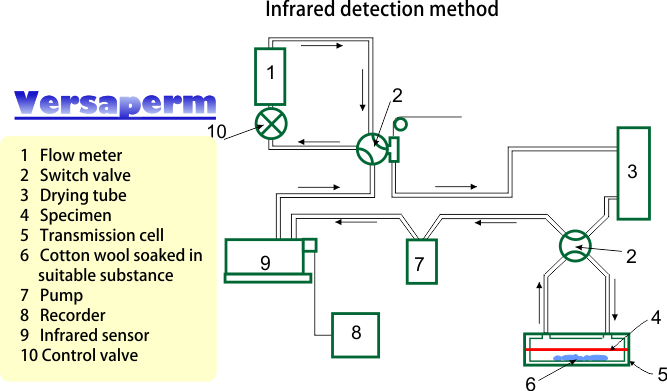

 DIN EN ISO 15106-2 Part 2 - Film and sheeting: Measuring the water vapour transmission rate using the
DIN EN ISO 15106-2 Part 2 - Film and sheeting: Measuring the water vapour transmission rate using the Water Vapour Transmission Rate (WVTR or MVTR) is the rate at which water flows through a sample per unit time. For this standard the sample is a plastic film or sheet. The measurement is taken at a specified temperature and vapour (partial) pressure. WVTR is commonly stated in different units (see our Conversion Units table
The ISO 15106-2 standard method for measuring the water Vapour Transmission Rate (WVTR) of plastic films or sheeting is based on a chamber divided into two halves by the specimen under test.
One half – the “wet side” is saturated with water vapour at a known temperature. The other side is the “dry chamber”.
Water vapour from the wet side permeates through the material under test where it is detected by an infrared sensor. The signal from the sensor is a direct measure of the relative humidity in the dry chamber.
The time taken to reach a steady state is measured and converted into a water vapour transmission rate.
The Water Vapour Transmission Rate depend on the on temperature and relative humidity (partial pressure) and these need to be stated be recorded and stated. Special care must always be taken so that the specimen under test is wrinkle and slackness free.

To calculate the water vapour transmission rate use the following equation:
![]()
Where
WVTR is the water vapour transmission rate of the test specimen
E0 is the zero-level voltage
ER is the steady-state voltage
S is the water vapour transmission rate
ES is the steady-state voltage, in volts
AVR is the transmission area, in square metres
AS is the transmission area, in square metres
The test result is calculated as the arithmetic mean of the results obtained for each test specimen.